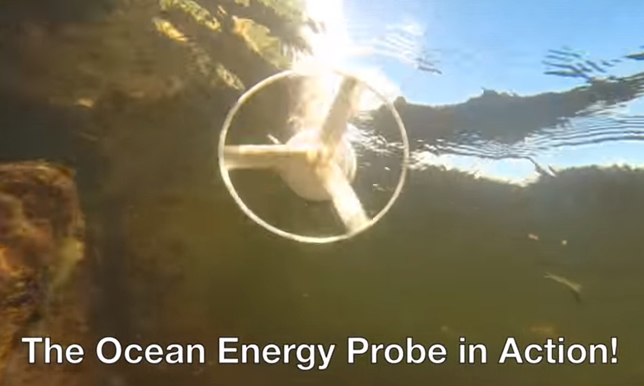Competition Seeks Top Young Scientist
- By Dian Schaffhauser
- 01/21/16
The annual quest for America's best young scientists is underway. Discovery Education and 3M have opened the latest competition, a multi-stage event intended to identify the "top" young scientist.
Last year's winner, Hannah Herbst, created an ocean energy probe that uses underwater currents to supply a steady source of power for multiple purposes, including desalination to provide potable water. She was inspired to pursue the project after learning about the problems faced by a nine-year-old pen pal from Ethiopia who lacked a reliable source of either water or electricity.

Last year's top young scientist, Hannah Herbst, created an ocean energy probe that uses underwater currents to supply a steady source of power for multiple purposes, including desalination to provide potable water.
The America's 2016 Top Young Scientist program is a competition that encourages students in grades 5-8 to come up with innovations for solving common problems. To start, participants enter a short video that explains a problem and their solution. Those are judged not on production quality (students can use a cellphone to create their video), but on creativity, scientific knowledge, persuasiveness and overall presentation. The 10 highest scoring entrants are picked as finalists to be matched up with a 3M scientist who will serve as a mentor, attend a taping of a Discovery Network show, and participate in a multi-day event at 3M's headquarters. A grand prize winner also receives $25,000.
"My favorite part about the YSC this summer has definitely been working with my 3M Mentor, Mr. Emslander. Developing my prototypes and building my innovation has been more productive and more fun with his guidance. We've had a great time, and I can't wait to meet him in person!" Herbst wrote in a final blog about her experiences. "If you're reading this blog post and are in middle school, I hope that you will apply for the 2016 Discovery Education and 3M Young Scientist Challenge. It is such an amazing opportunity to explore, innovate and work with a scientist from 3M to develop your prototype."
Video entries are due by April 20, 2016 and must be submitted online to youngscientistchallenge.com.
About the Author
Dian Schaffhauser is a former senior contributing editor for 1105 Media's education publications THE Journal, Campus Technology and Spaces4Learning.